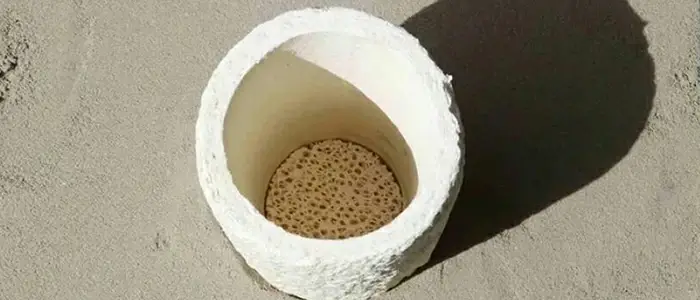As a foundry specialist with years of hands-on experience, I’ve witnessed a simple truth: the purity of your molten metal directly dictates the quality of your final casting. In the relentless pursuit of fewer defects and higher yields, metal filtration stands out not as an optional extra, but as a fundamental pillar of modern foundry practice. If you’re battling scrap rates caused by inclusions, understanding and implementing the right metal filtration system is your most effective strategy.
What is Metal Filtration in Casting? And Why It’s Non-Negotiable
When we talk about metal filtration in a foundry context, we refer to the process of physically removing harmful solid impurities from molten metal as it flows from the ladle into the mold. These impurities—like slag, oxides, and refractory fragments—are the primary culprits behind casting defects.
From my experience, the question isn’t “Can I afford to use a filter?” but rather “Can I afford not to?” The benefits of implementing a robust metal filtration system are clear:
-
Drastic Reduction in Defects: Directly targets and eliminates the root cause of scrap parts—inclusions.
-
Improved Mechanical Properties: Cleaner metal means more consistent tensile strength, enhanced pressure tightness, and superior machinability.
-
Enabled Complex Castings: Achieving sound results in intricate geometries, such as engine blocks or turbine blades, is often impossible without effective molten metal filtration.
Ceramic Foam Filters vs. Sintered Metal Filters: Which is Right for Your Process?
This is the core choice in foundry metal filtration. Both are excellent but serve different masters.
Ceramic Foam Filters (CFFs): The High-Temperature Champion
-
Material: Made from refractory oxides like alumina, zirconia, or silicon carbide.
-
How They Work: Their three-dimensional, open-cell foam structure provides depth filtration, trapping inclusions throughout the entire matrix.
-
Best For: I consistently recommend CFFs for the filtration of aluminum casting, cast iron, steel, and other high-temperature alloys. Their exceptional thermal shock resistance allows them to withstand the immense heat of molten metal without cracking.
-
Key Advantage: Unmatched dirt holding capacity for its weight and cost, making it ideal for bulk inclusion removal.

Sintered Metal Filters: The Strength & Reusability Option
-
Material: Typically made from high-temperature stainless steel or super alloys.
-
How They Work: Sintered powder or woven wire mesh creates a porous structure that can perform surface and depth filtration.
-
Best For: While less common in mainstream ferrous foundries, I’ve seen them used effectively in investment casting of superalloys, or as reusable filters in low-pressure die casting systems for aluminum.
-
Key Advantage: High mechanical strength and the potential for cleanability and reuse in certain controlled applications.
My Practical Takeaway: For over 90% of foundries pouring ferrous or non-ferrous metals, Ceramic Foam Filters are the specialized, cost-effective solution designed specifically for the extreme conditions of molten metal.
How to Choose the Right Metal Filtration Parameters?
Selecting the right filter is more than just picking a type. Based on my experience, you must consider these three parameters:
Filter Material (Chemical Compatibility):
- Alumina (Al₂O₃): Your go-to for aluminum and copper alloys.
- Silicon Carbide (SiC): Excellent for cast iron and higher-temperature copper alloys.
- Zirconia (ZrO₂): Essential for the demanding environment of steel casting and superalloys.
Pore Size (PPI – Pores Per Linear Inch):
- 10-20 PPI: Coarse filtration for heavy metals or high inclusion loads.
- 20-30 PPI: The workhorse range for most iron and aluminum castings.
- 30-50+ PPI: Fine filtration for critical steel investment castings where micro-inclusions are unacceptable.
Filter Size & Thickness:
This is a flow rate calculation. An undersized filter will choke the flow, causing misruns. An oversized one is a waste of money. Always consult flow rate charts—don’t guess.
Common FAQs on Foundry Metal Filtration
Q: Does metal filtration slow down the pouring process too much?
A: This is a common concern. A properly sized filter creates an initial resistance that then promotes a smoother, laminar flow downstream. While there is a minimal flow rate impact, it is far outweighed by the elimination of turbulence-related defects. The key is correct sizing.
Q: Can I use ceramic filters for both ferrous and non-ferrous metals?
A: Absolutely. This is the power of the technology. By simply selecting the correct refractory material (as listed above), the same ceramic foam filtration principle applies brilliantly across the entire spectrum of cast metals.
Q: What is the ROI of implementing metal filtration?
A: In my calculations for clients, the ROI is almost always positive and often rapid. The cost of a filter is trivial compared to the cost of a single scrapped medium-to-large casting. When you add saved energy, labor, and machine time, the filter pays for itself by preventing just one defect.
Conclusion: Elevate Your Casting Quality with Strategic Metal Filtration
In conclusion, metal filtration is not a band-aid solution; it is a proactive quality control strategy. By integrating the correct filter—most often a Ceramic Foam Filter—into your gating system, you are not just removing impurities. You are investing in the integrity of your product, the reputation of your foundry, and the bottom line of your business.
The path to cleaner castings and higher profitability is clear. It flows directly through a well-chosen metal filtration system.

